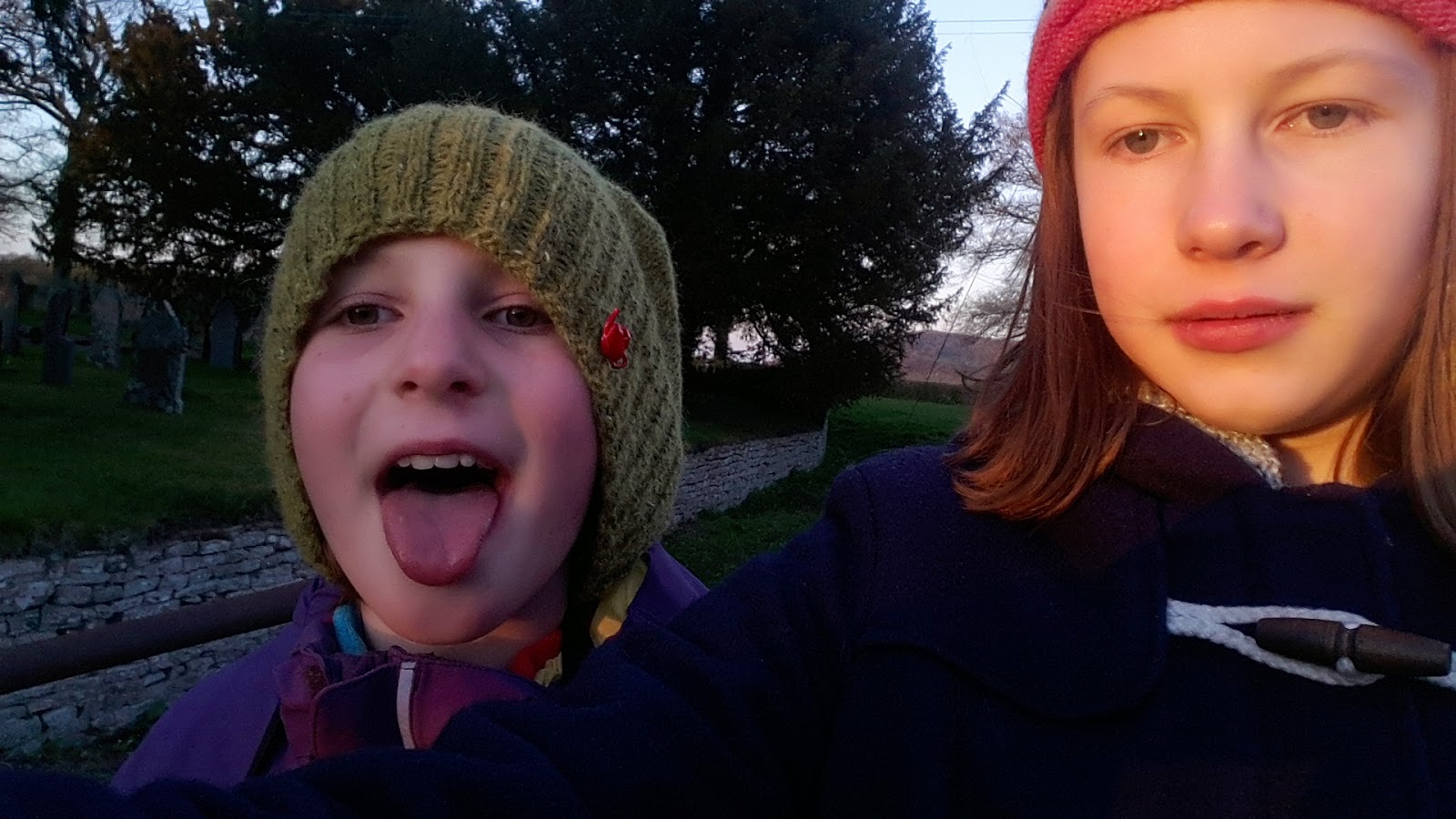 |
| Young stargazers, Lottie and Millie |
The evening event was stargazing at Holy Trinity Church in Hardwicke, just outside Hay. Quite apart from the lack of light pollution, the location was a special one, since the vicar of the parish from 1856 until 1885 was Reverend Thomas William Webb, who in his spare time observed the night sky with telescopes and an observatory he had built himself.
 |
| Holy Trinity Church, Hardwicke |
In 1859, while at Hardwicke he wrote the classic book, Celestial Objects for the Common Telescope, the object of which was "to furnish the possessors of ordinary telescopes with plain directions for their use, and a list of objects for their advantageous employment".
The book remained in print well into the following century (and was recently republished by Cambridge University Press), and it's probably difficult to overemphasise the importance of this book in encouraging generation after generation of amateur stargazers.
In the words of Janet and Mark Robinson, who used to live in the vicarage and have edited a book about Webb,
Like Patrick Moore, he was an enthusiast who wanted to inspire as many people as possible to look through a telescope. Even at the choir party he "arranged the telescope and acted as showman and all in turn had a look at Saturn".Webb would no doubt have been pleased to see yesterday's gathering of enthusiastic amateurs (including the Robinsons) with an impressive range of telescopes, on a cold but very clear night. The highlight for us was seeing Jupiter and its four brightest moons (Io, Europa, Ganymede and Callisto) through a large reflecting telescope. We could even see the north and south belts, and the Great Red Spot (or Pink Splodge as Lottie named it).
 |
| Sunset. Venus is visible top centre |
No comments:
Post a Comment